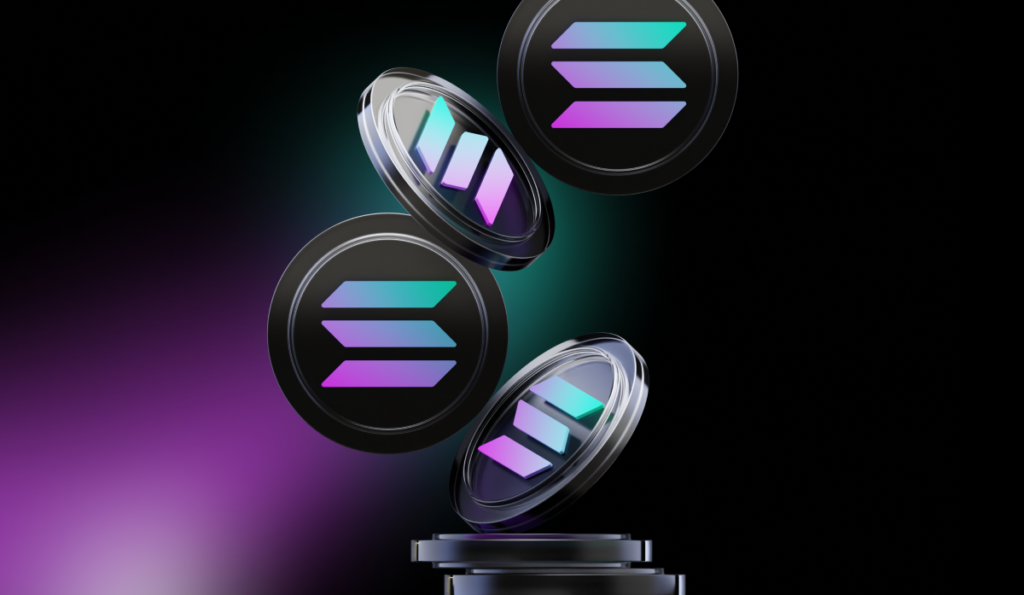Solana Blockchain Overview
The Solana blockchain overview reveals why this high-performance network has become one of the most talked-about players in the crypto space. Known for its record-breaking transaction speeds, near-zero fees, and groundbreaking architecture, Solana is positioning itself as a leader in the next generation of decentralized technology.
While Ethereum and Bitcoin still dominate headlines, Solana’s rise demonstrates how blockchain innovation can redefine what’s possible in decentralized finance (DeFi), non-fungible tokens (NFTs), and beyond.
Understanding Solana’s Revolutionary Architecture
At the core of Solana’s rapid ascent is a highly innovative design that challenges traditional blockchain models. Its architecture is built for scale, making it one of the few networks capable of supporting mass adoption.
Proof of History: A Game-Changing Consensus
Unlike typical consensus systems, Solana uses Proof of History (PoH), a cryptographic clock that timestamps transactions before they’re confirmed. This allows validators to process blocks without constant communication, reducing latency and boosting throughput. According to Solana Labs, this method enables transaction finality in a fraction of a second, a major leap over proof-of-work systems like Bitcoin.
Parallel Processing and Multi-Threading
Solana’s unique approach to parallel transaction processing ensures that thousands of non-conflicting transactions can be executed simultaneously. This multi-threaded architecture powers its smart contracts — or “programs” — enabling dApps and DeFi platforms to run at scale without network congestion.
This design, pioneered by Solana founder Anatoly Yakovenko, is regarded by many blockchain researchers as a blueprint for future decentralized systems.
Breaking Speed Records in Blockchain
Solana has consistently outpaced rivals in performance benchmarks. While Bitcoin averages 7 transactions per second (TPS) and Ethereum manages around 15–45 TPS, Solana can theoretically process 65,000 TPS. In practice, it regularly achieves 400–2,000 TPS, depending on network demand.
Such speed positions Solana as a leading choice for applications where high-frequency, low-latency processing is essential — from DeFi trading to gaming and real-time NFT minting.
“Solana’s design proves that scalability without sacrificing security is possible,” notes a CoinDesk analysis.
Cost-Efficiency and Transaction Economics
Beyond speed, Solana’s cost structure has been equally disruptive. Transactions average less than $0.001, a fraction of Ethereum’s multi-dollar fees. This predictable fee model is enabled by local fee markets, which isolate spikes in demand so they don’t inflate costs across the network.
Fee Comparison Across Blockchains
- Solana: ~$0.001
- Ethereum: ~$5.00
- Bitcoin: ~$1.50
For decentralized applications, especially DeFi protocols that require numerous microtransactions, this economic model is transformative. It lowers barriers to entry, enabling developers to build user-friendly services without pricing out participants.
Network Security and Validator Infrastructure
Despite its speed and affordability, security remains central to Solana’s growth. As of 2023, Solana supported nearly 1,900 active validators across more than 40 countries, alongside over 900 RPC nodes. This global distribution strengthens decentralization, resilience, and uptime.
Regular smart contract audits, combined with Solana’s active developer community, ensure that the network remains both secure and adaptable. According to Messari, Solana’s validator network is among the most geographically diverse in the industry.
Solana’s Expanding Ecosystem
The Solana blockchain overview would be incomplete without highlighting its thriving ecosystem. With a market capitalization exceeding $59 billion and adoption across DeFi, NFTs, and Web3 applications, Solana has emerged as a cornerstone of the decentralized economy.
From NFT marketplaces to high-frequency DeFi exchanges, projects continue to flock to Solana for its efficiency, low costs, and scalability.
Conclusion: Solana’s Future in Web3
This Solana blockchain overview demonstrates how the network has redefined the trade-offs traditionally associated with blockchains. By combining Proof of History, parallel processing, and a robust validator network, Solana has achieved an unprecedented balance of speed, security, and affordability.
Looking forward, Solana’s biggest challenge will be maintaining its performance at scale while avoiding the centralization risks that often accompany rapid growth. Yet, with a vibrant developer community and growing institutional interest, Solana is positioned to play a defining role in the future of Web3.
FAQ: Solana Blockchain Overview
What is Solana?
Solana is a high-performance blockchain platform designed for decentralized applications, known for its fast transaction speeds, low fees, and scalable architecture.
What makes Solana different from other blockchains?
Unlike Ethereum and Bitcoin, Solana uses Proof of History and parallel transaction processing, enabling up to 65,000 TPS with minimal fees.
How fast is the Solana blockchain?
On average, Solana handles 400–2,000 TPS, with a theoretical upper limit of 65,000 TPS, significantly faster than Bitcoin (7 TPS) and Ethereum (15–45 TPS).
What are Solana’s transaction fees?
Solana’s fees are typically less than $0.001 per transaction, making it one of the most cost-efficient blockchains available.
How secure is Solana?
With nearly 1,900 active validators across 40+ countries, Solana maintains a decentralized and resilient validator infrastructure that enhances network security.

